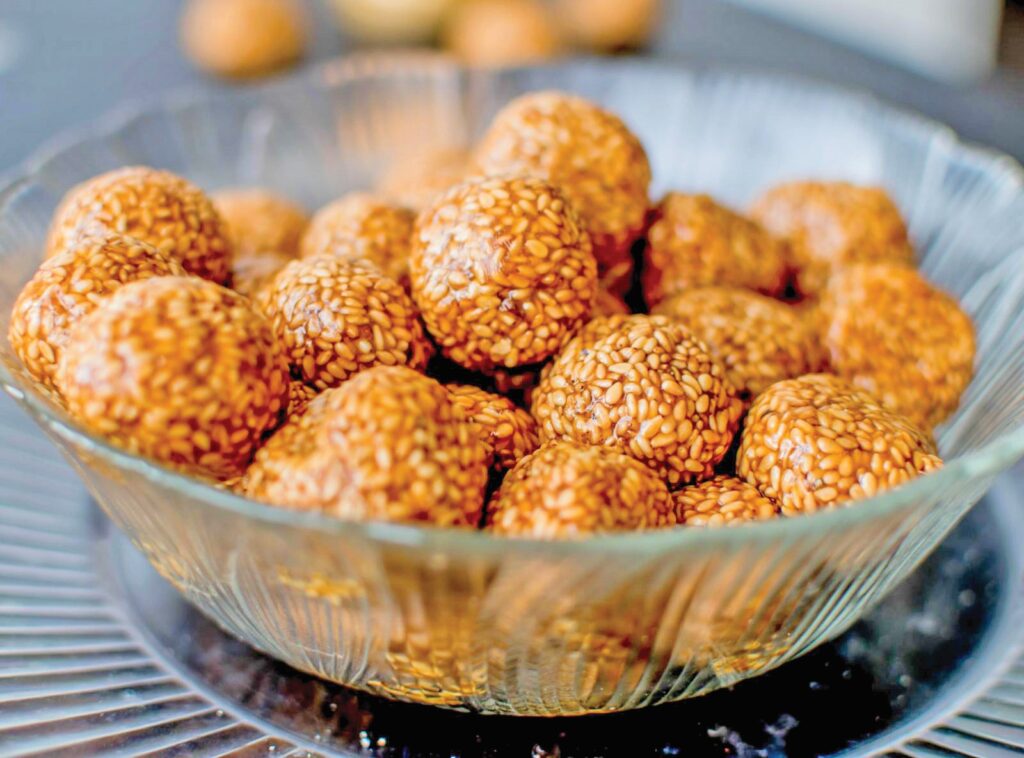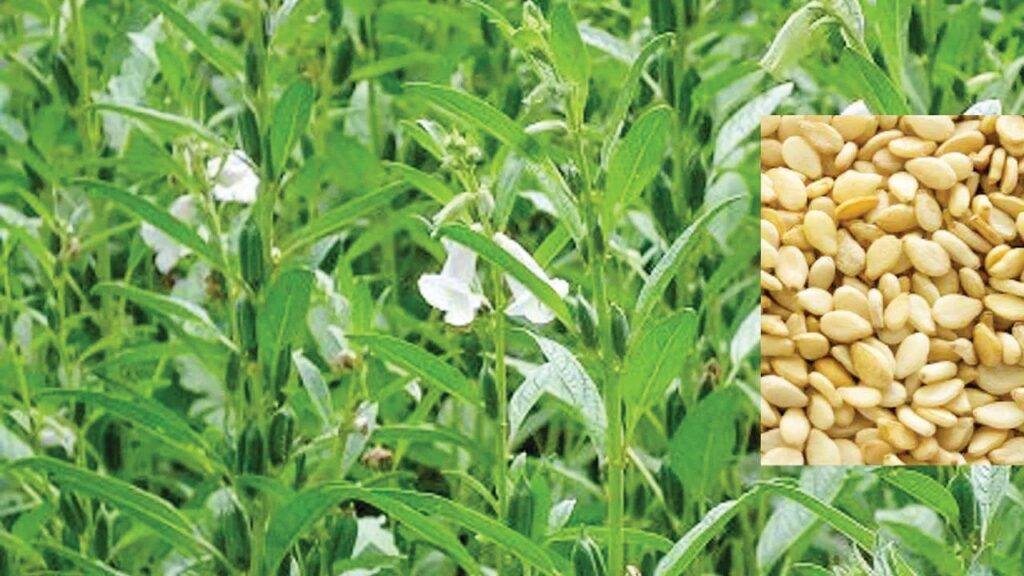Sesame, known as “til” in Hindi, is often called the “Queen of Oilseeds” due to its high-quality edible oil and rich protein content. This ancient crop, believed to be native to India, has found a special place in the fields of Rajasthan’s farmers.
Rajasthan, along with Madhya Pradesh, leads India in sesame production, accounting for about 23% of the country’s yield. This is no small feat. The golden seeds are more than just a crop here; they’re a part of the state’s agricultural heritage and tradition.
Growing in the Desert
Sesame grows in Rajasthan’s arid climate, making it a perfect crop for the state’s challenging environment. The main sesame-growing districts in Rajasthan include Pali, Sawai Madhopur, Jodhpur, Karauli, Bikaner, Jalore, Bhilwara, and Ajmer. These regions, spread across different agro-climatic zones of the state, contribute significantly to Rajasthan’s sesame production.
During the 2021 season, sesame occupied nearly 3.05 lakh hectares in Rajasthan, with a total estimated production of 12.59 metric tons. The average yield stood at 412 kg per hectare, showcasing the crop’s resilience in the face of harsh growing conditions.
It is More Than Just Oil
While sesame is primarily known for its oil, it’s a nutritional powerhouse in its own right. The tiny seeds have major health benefits. They’re high in protein (18 to 25%) and contain a whopping 38 to 54% of edible oil. This oil is rich in oleic and linoleic acids, making it a heart-healthy choice. Sesame seeds are also a great source of cholesterol-lowering phytosterols. They’ve been found to help improve blood pressure and balance hormones. Moreover, these little seeds can boost nutrient absorption in the body, making them a valuable addition to any diet.

Sesame in Rajasthani Cuisines
Now, let’s dive into the most delicious part of our sesame story. Sesame seeds find their way into a variety of dishes, from sweets to savories, each showcasing its versatility.
1. Sesame Seed Laddoo: A Sweet Treat
One of the most popular sesame dishes in Rajasthan is the Sesame Seed Laddoo. To make these laddoos, sesame seeds are first lightly roasted, bringing out their nutty flavor. Then, they’re mixed with melted jaggery and a touch of ghee. This mixture is then shaped into small, round balls.
The result is a sweet, that’s crunchy on the outside and slightly chewy on the inside. The nuttiness of the sesame pairs perfectly with the caramel-like sweetness of the jaggery. It’s a treat that’s not just delicious but also nutritious, making it a favorite during festivals and as an everyday snack.
2. Sesame Halwa: A Rich Indulgence
This rich, dense sweet dish is made in every household of Rajasthan with love, requiring patience and skills to prepare. The process starts with roasting sesame seeds until they’re golden and fragrant. Meanwhile, a sugar syrup is prepared, which is then mixed with the roasted sesame seeds and a generous amount of ghee. The mixture is then cooked slowly, stirring constantly, until it thickens and reaches a halwa-like consistency. The result is a decadent sweet that’s full of sesame flavor, with a texture that’s both smooth and slightly grainy. It’s often served warm, making it a perfect comfort food during Rajasthan’s cool winter evenings.

3. Churma Ladoo: A Festival Favorite
While not exclusively a sesame dish, Churma Ladoo is a beloved Rajasthani sweet that often includes sesame seeds in its recipe. This dish is a staple during festivals like Holi, Diwali, and Ganesh Chaturthi, bringing a touch of sesame’s nuttiness to the celebrations.
To make Churma Ladoo, wheat flour is first roasted in ghee until it turns golden brown. This is then mixed with powdered sugar, grated coconut, and of course, roasted sesame seeds. The mixture is shaped into round laddoos, sometimes with a surprise filling of melted jaggery in the center.
The sesame seeds add a crunch and nutty flavor to these laddoos, complementing the richness of the ghee and the sweetness of the sugar. It’s a perfect example of how sesame integrates seamlessly into Rajasthan’s sweet traditions.
4. Til Papdi: A Crunchy Delight
Til Papdi is another popular sesame-based snack in Rajasthan. These thin, crispy wafers are made from a dough of wheat flour, sesame seeds, and spices. The dough is rolled out thin, cut into diamond shapes, and then deep-fried until golden and crispy.
The result is a savory snack that’s crunchy, nutty, and slightly spicy. The sesame seeds provide a delightful texture and their distinct flavor, making Til Papdi a favorite tea-time snack across Rajasthan.
Sesame Beyond the Kitchen
The crop is a significant source of income for many small and marginal farmers in the state. Its ability to grow in harsh conditions makes it a reliable crop even in years when other crops might fail.
Moreover, sesame fits well into Rajasthan’s crop rotation systems. It’s often grown in rotation with wheat, green gram, or barley, helping to maintain soil health and providing farmers with diverse income sources throughout the year.
The oil extraction process also provides additional economic opportunities. Sesame oil is used not just for cooking, but also in various industrial applications such as the manufacture of soaps, cosmetics, and lubricants.
Sesame’s future
As we look to the future, sesame continues to hold promise for Rajasthan’s agriculture and cuisine. Efforts are ongoing to develop disease-resistant varieties that can withstand challenges like the Alternaria blight. There’s also growing interest in organic sesame cultivation, catering to the increasing global demand for organic products.
Chefs are experimenting with new ways to use sesame in both traditional and modern dishes. From sesame-crusted meats to sesame milk, the possibilities seem endless. As climate change poses new challenges to agriculture, sesame’s drought-resistant nature may make it an increasingly important crop. Its nutritional profile also aligns well with the growing consumer interest in plant-based proteins and healthy fats.







